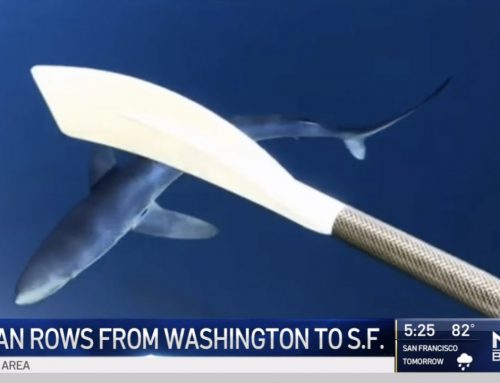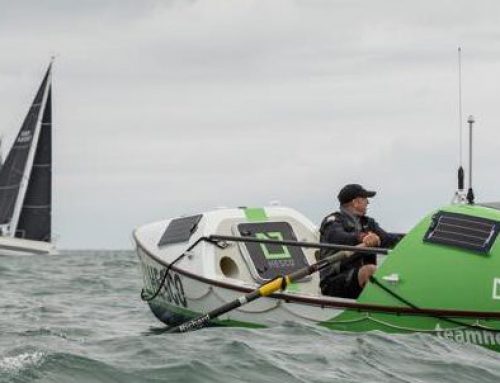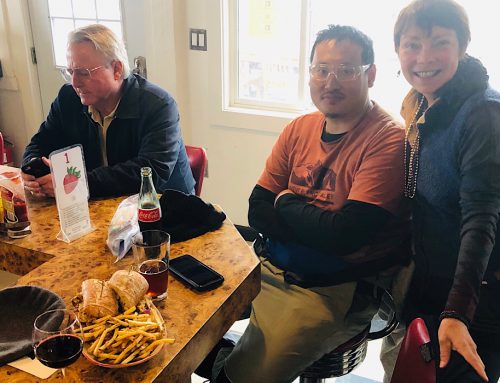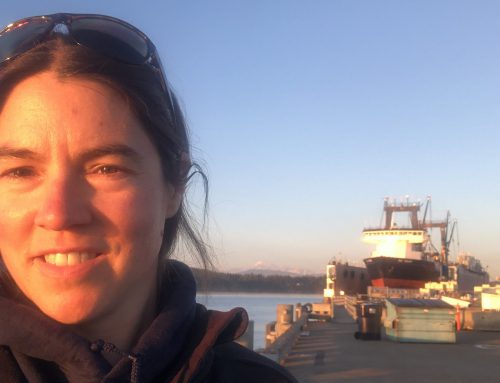The disappearance of the moon sets my body off on another desire to sleep. It’s not so much that I want to sleep, mostly I want to stop rowing. I decide to let the boat drift and go in my cabin and lie down for 10 minutes. Except I am not exactly offshore. I am just south of a graveyard of shipwrecks, close to the shore and I am fearful that a catnap of 10 minutes might turn into 4 hours. I can’t relax which means rest is impossible. Lassoing the marker buoy and tying off to it for a 5-6 hour phase of the tide, probably at this point, wouldn’t have been a bad idea.
The next 4 hours are difficult. My brain feels foggy, my body dozy. I enter another phase of sleep deprivation I call ‘New Found Fascination.’ I stare at the lanyard for my VHF radio in wonder. Is it a worm? Then my brain figures out that it’s not a worm, but the lanyard for my VHF radio! Left and right my imagination runs away with itself.
I try to punch through this phase by snacking.
I make a mistake. I am not sure whether to tuck in towards the shoreline in order to find the incoming tide drawing back into the bay or head further out to sea. I am afraid to head further out to sea, in case I get swept out. There is no wind so this fear is irrational. All fear is irrational.
Next my boat’s GPS speed starts dancing around, fluctuating from 0.8 knots to 3 knots. There is hope I will make it to Pt. Bonita in time! I am flirting with a current line! The best thing this does is jolt my brain awake. I become alert, focused on the numbers game. Then I pull 10 strokes and look up, ‘Are we there yet?’ I’ve hardly moved.
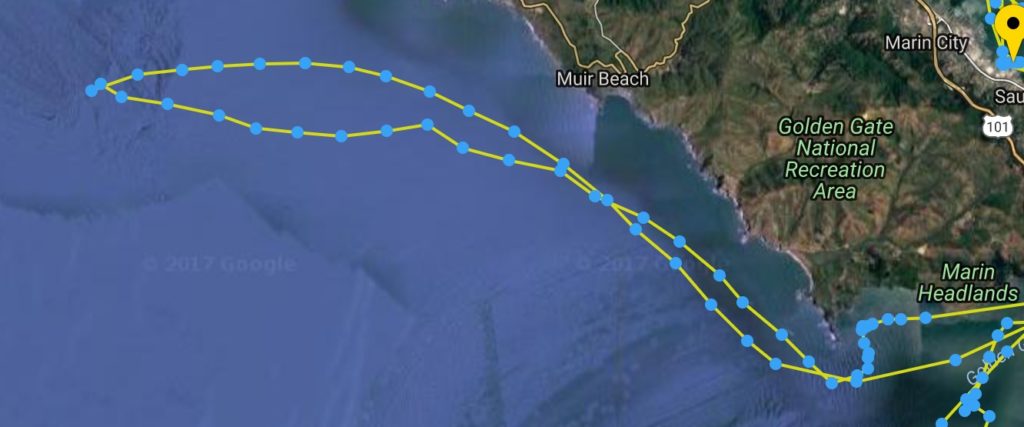
My track to and from the marker off Duxbury Reef.
By 4am I realise I need to speed up. I don’t want to get locked out of the bay by the outgoing tide.
I reach Pt. Bonita as time runs out. Gusts of katabatic winds roll down the headland and blast me every now and then.
A set of Pacific rollers, massive slow-rolling waves of 10ft height course under my boat and engulf the rocks. I’ve rowed to Pt. Bonita in daylight and seen the white teeth of the rocks.
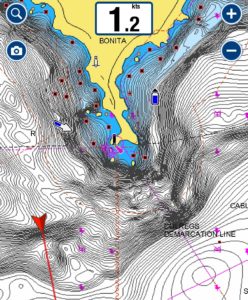
I pull hard for an hour to head south of the rocks.
I pull hard for another hour against the tide to turn east.
I pull hard for a third hour to claw my way into Bonita Cove on the east side of the point nearest the bridge. I start hunting for the countercurrent and it isn’t there.
The wind is up to 15 knots from the SE. I am rowing into wind and into tide. After 14 hours of non-stop rowing there isn’t much left in the tank. I know I can row against this wind on a normal day, but today? I am not so sure.
I realise that while I am getting further into the bay, I am not getting closer to Pt. Bonita’s rocks. I am succeeding in treading water.
This isn’t good training. I am beating myself up. It’s 8am.
The man who receives my call at TowBoat US is perfunctory. When I say I don’t have an engine and haven’t broken down, he says they won’t send a boat to come and get me. I send a few texts to see if one friend or another can come. They can’t. I have a few more options, but I am disgruntled that I’ve paid for TowBoat US membership having checked that they would cover me and now they’ve flip-flopped and say they won’t. I would not have gone out with a support boat if I had known.
I call the membership line and by chance get the same lovely lady I spoke to the day before. She is aghast that she was misinformed after she double-checked.
‘What are you going to do? Do you want me to call the Coastguard?’ she says.
‘I will keep rowing,’ I say. ‘Don’t worry.’
My options as I see them are:
- Give up the fight and drift out with the outgoing tide. The problem with this option is that I haven’t slept. The wind will push me out to sea, with no guarantee that the next tide or wind direction will help me row back. The current will sweep me south. I will be further away if I need rescuing.
- Tread water and wait for the countercurrent to establish or the tide to turn in 3 hours. The problem with this option is that I haven’t slept. The wind may be stronger later.
- Call the Coastguard.
As the sun rises the wind drops, I find some gummy bears and the counter-current starts to materialise. I shift mental state from giving up to making it to Horseshoe Cove under my own steam. Off we go to Pt. Diablo!
The wind picks up again, but the countercurrent has strengthened and I am able to row at 2 knots. The wind is up to 20 knots. I know this because it’s knocking my bow and turning my boat. I put the rudder hard over. Row. Put the rudder hard over the other way. Row. It’s the only way, but progress is progress. It’s going to be a long morning.
My phone rings. It’s Phil from TowBoat US in Alameda. ‘I know your boat. I’ve seen it. Do you still need a tow? This one is on us,’ he says.
I pause. I am making progress and there is something pleasing about completing a voyage as planned. I give pride a shove in the ribs. I am already into the next phase of sleep deprivation: I could sleep anywhere on any surface in any position. ‘Stay off the rocks,’ Phil says. ‘I’ll be there in 20 minutes.’
I want to cry. I keep rowing. I begin playing a silly game with myself, how-far-can-I-row-before-the-tow-arrives?
Phil soon has my boat under tow.
It takes us a good 20-30 minutes under tow to get to Horseshoe Cove. I would have struggled around Pt. Diablo. I can’t see the countercurrent there at all. Kirby Cove is exposed to wind from the SE, so anchoring there would have been less than ideal. As we go by the final stretch of my row, I am as close to the headland as I’ve ever been. It would have been a very long morning with a lee shore.
Phil drops the tow and I row in to Horseshoe Cove. The Presidio Yacht Club is just a building. There is no one around. I find a dock space at the marina and tie up. My body hurts. I am ravenously hungry and desperately tired. I prepare a freeze-dried meal of porridge with sultanas. 1,000 calories. I don’t have a spoon, so I over hydrate it and turn it into soup. The 1,000 calories doesn’t do anything for me. I don’t feel like I’ve eaten at all. Sleep pulls at my body. I toss out my sleeping bag and spend the next 5 hours tossing and turning, uncomfortable and in varying degrees of muscle pain.
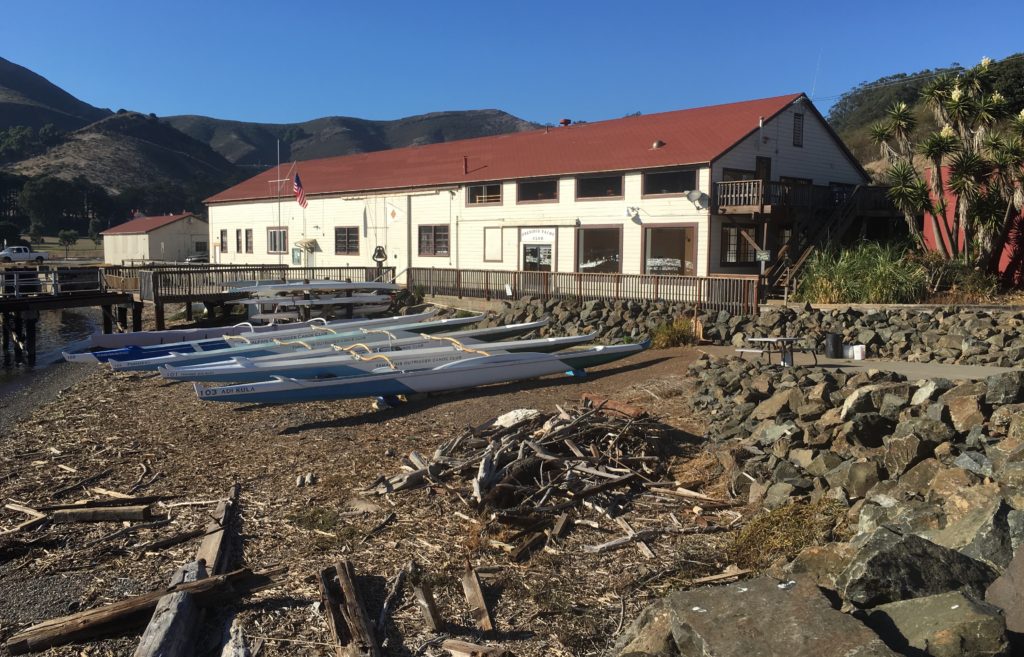
Presidio Yacht Club
I am grateful to Traffic Lady on Channel 14 for keeping me entertained and to friends for their encouraging texts during the darkest hours.
I rowed for 14:33 hours and covered 32.3 nautical miles.
I lost 3.8 lbs.
I am still recovering.
And I remain daunted by the fact that I need to be able to row that many hours consecutively day-after-day for potentially 4 to 6 months.
